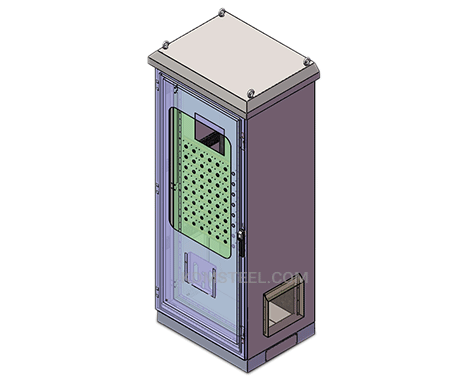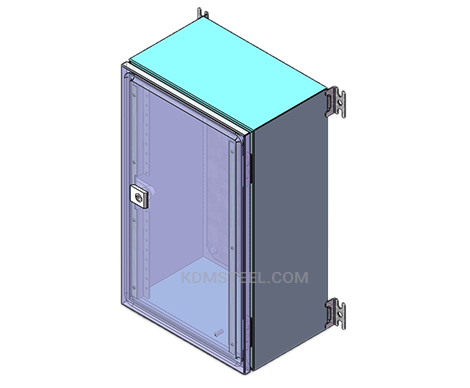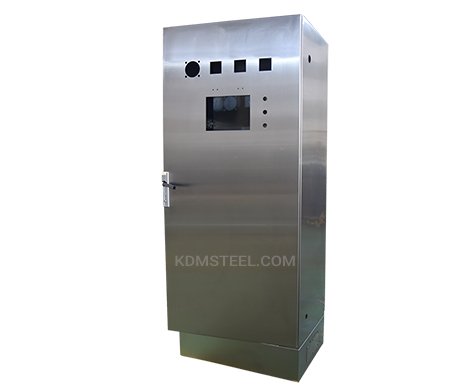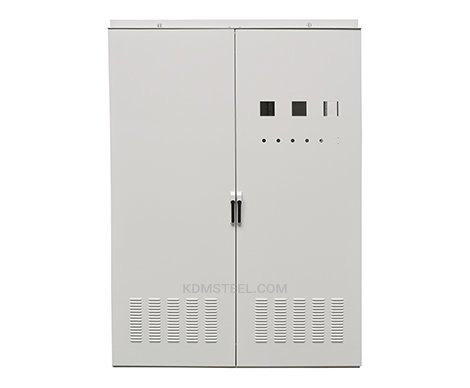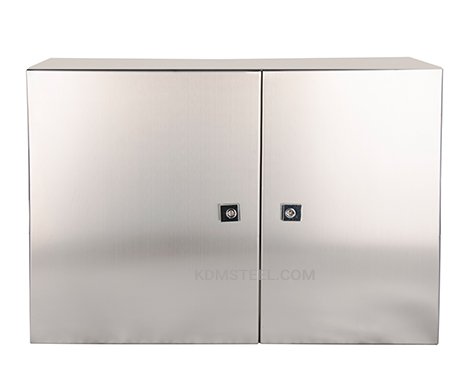凭借多年的外壳行业经验,请考虑使用我们的 NEMA 13 外壳来获得最佳的设备保护。
NEMA 13 外壳和盒子
在 KDMFAB,我们提供 NEMA 13 外壳,在安全性、功率和实用性之间实现了理想的平衡。它由优质不锈钢或钢材制成,具有出色的耐用性,可抵抗非腐蚀性油、水、冷却剂和灰尘。
制造工厂、制药厂、汽车行业、食品和饮料行业均可从我们的 NEMA 13 外壳中受益匪浅。
KDM NEMA 13 外壳系列
发送有关 KDM NEMA 13 外壳的询问
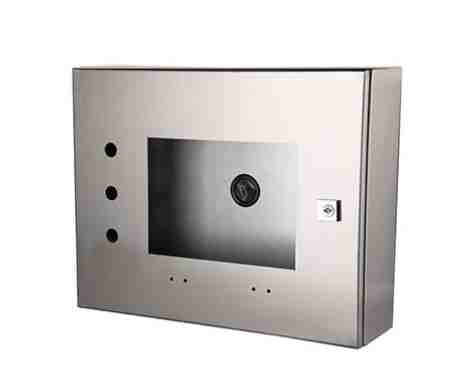
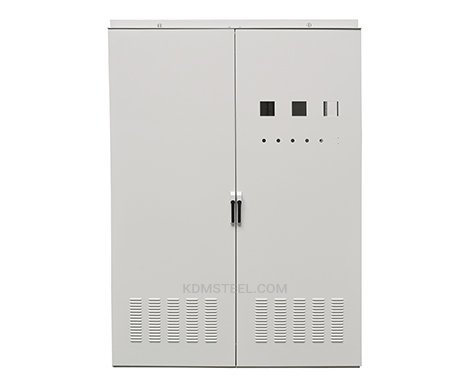
NEMA 13 外壳定制细节
KDMFAB 为 NEMA 13 外壳提供定制选项。
我们可以提供定制尺寸、附加安装选项、开关和显示器的切口以及特定的表面处理或涂层,以满足您的应用需求。
对于其他安装选项,我们的 NEMA 13 外壳可以安装在墙壁、地板或杆子上,具体取决于用途。
我们对 NEMA 13 的常见表面处理包括粉末涂层、搪瓷漆和镀锌涂层。

- 生产能力
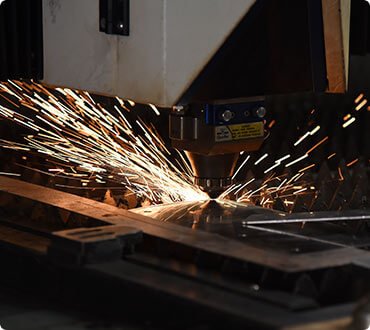
4000W高性能激光切割机,精度+/-0.05mm。无毛刺,无划痕。
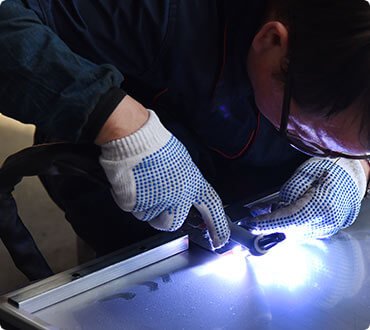
多功能柔性焊接设备,精度高,不变形。
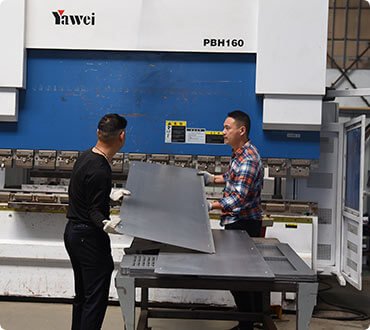
+/- 0.5mm的弯曲精度,表面光滑无弯曲痕迹。
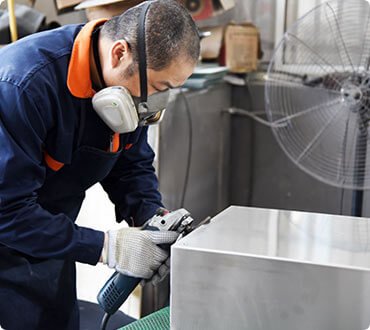
10+名焊接经验丰富的工人,整体外观完美。
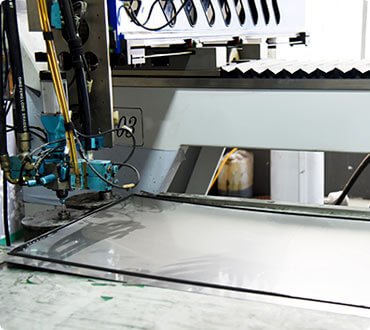
高速、高精度发泡机,快速、合格的垫片
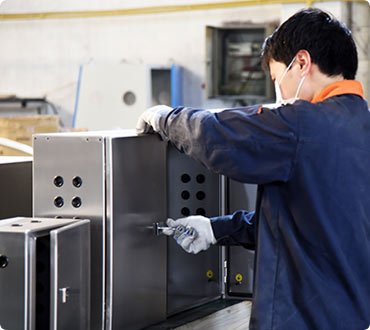
专业的装配团队,每个 KDM 外壳的装配质量始终如一
我们制造的 NEMA 13 外壳应该能够在特定温度范围内运行,通常在 -40°C 至 +60°C (40°F 至 +140°F) 之间。
我们的外壳已获得相关部门的批准,并满足 NEMA 13 标准。CSA(加拿大标准协会)或 UL(美国保险商实验室)等认证表明我们的外壳已通过测试,并满足性能和安全要求。
我们设计的 NEMA 13 外壳带有完全定制的配件,其中包括:
- 面板安装硬件,包括螺钉和支架。
- 面板可能是内部的、金属的或非金属的。
- 安装套件和支脚
- 密封件和垫圈
- 旋转式货架
- 滴水罩
- 通气孔
- 窗户检查
- 用于安装外部设备的支架
- 门铰链类型的变化
- 过滤器、风扇、通风口和冷却配件
- 室内照明,荧光灯或 LED
- 接地带和接地棒
- 线槽、应力消除装置和电缆密封套
- 加热装置和恒温器
- 用于识别的个性化标签和铭牌
- 其他锁定系统,例如四分之一旋转闩锁和可挂锁的手柄
最近的 IP67 外壳订单
NEMA 13 外壳权威常见问题解答指南
NEMA 类型 13 是什么意思?
NEMA 13 型外壳可保护人员免于意外接触带电部件,并保护设备免受污垢、灰尘、棉绒、各种飞絮、溅水、油和非腐蚀性冷却剂的侵害。
NEMA 类型 13 外壳仅适用于室内环境。
这些外壳相当罕见;比 4 型或 12 型外壳要罕见得多。
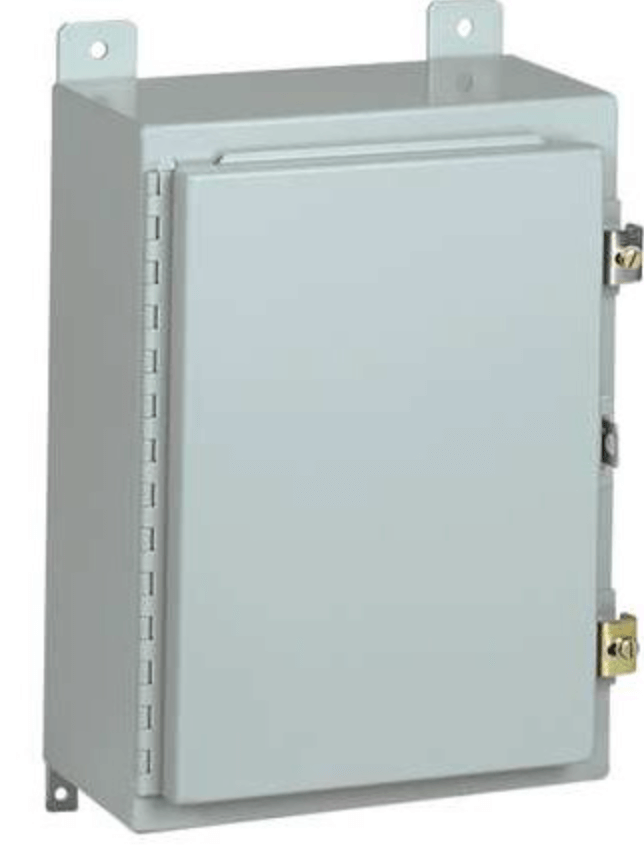
NEMA 13 盒
NEMA 13 与 NEMA 12 有何不同?
NEMA 13 与 NEMA 12,但它比NEMA 12箱能更好地保护设备免受溅油和冷却剂的损害。
因此,如果您的应用主要关注溅油和冷却剂,则仅选择类型 13。
冷却剂包括 切削和抛光液 冷却机器。
当材料被抛光或切割时,材料和机器都会因摩擦而升温;切削液就是这样的。
其他此类液体包括液氮、外用酒精和煤油。
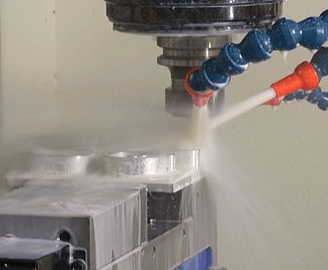
切削液
因此,任何金属加工行业都可能需要一些 NEMA 13 外壳。
NEMA 13 所保护的油可能包括矿物油(有时用于化妆品和生物医药)以及马达/发动机油。
NEMA 13 外壳是否用于户外?
NEMA 13 外壳不能在户外使用,因为它们仅适合在室内使用。
您可以在室外安装 NEMA 13 外壳,但前提是气候干燥、无风。
即使如此,我们也不建议这么做。
如果您需要户外外壳,NEMA 类型 3, 3R, 4, 和 4X 更好。
同样,NEMA 13 外壳并非完全防风雨。
它们确实可以防止一些灰尘和液体的侵入,但不足以抵御户外天气条件。
NEMA 13 防爆吗?
不,您需要 NEMA 类型 7 或 8。
如果您计划在化学工厂或石油精炼厂安装外壳,则您的外壳需要达到 NEMA 7 或 8 的等级。
此外,没有 NEMA 等级可以保护 电弧闪光.
NEMA 13 外壳的常见应用有哪些?
NEMA 13 外壳主要用于 工业应用。
这些包括室内电气 液压 或者 气动控制s、终端或 j接线盒、操作员界面和控制台。
NEMA 13 外壳可容纳额定电压为 1000 伏或更低的电气设备。
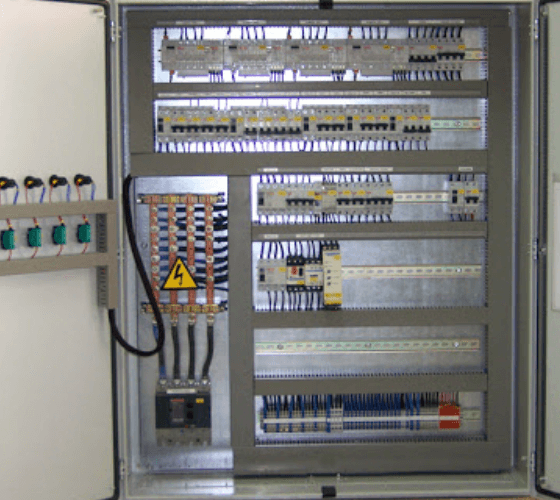
NEMA 13
这些外壳通常用于运输行业、各种市政设施(例如水处理厂)和一般室内控制应用。
由于 NEMA 13 外壳具有耐油和冷却剂的特性,因此可用于非危险的石油加工室、锅炉房、汽车装配或服务车库以及通用应用。
欲了解更多信息,请查看我们的一般 NEMA 外壳常见问题解答!
NEMA 13 外壳如何测试?
您可以参考最新的NEMA 250文件,了解自我声明的要求 NEMA 标签.
NEMA 13 使用室内防腐测试、排油测试和垫片测试进行测试。
油排除测试包括用水和润湿剂(也称为表面活性剂,可充当洗涤剂)制备溶液。
然后将该溶液以每分钟 7 升的速度喷洒到外壳上,持续至少 30 分钟。
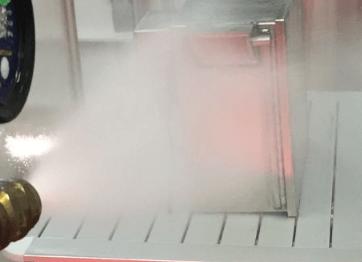
喷雾试验
通过此项测试可保证通过灰尘测试、杆进入测试和雨水测试。
室内腐蚀试验是配制5%氯化钠溶液,然后连续24小时喷洒在外壳上。
NEMA 13 外壳还经过各种垫片测试,以评估它们在高温拉伸时的老化情况。
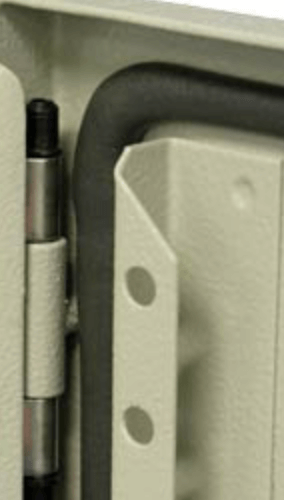
垫圈
这是老化垫片测试。
如果没有裂缝或变形,且抗拉强度保持不变,则外壳通过该测试。
对于 NEMA 13 外壳,也有油浸垫片测试。
为了通过测试,PU 垫圈的膨胀量不得超过 25%,收缩量也不得超过 1%。
垫圈在油中测试 70 小时。
这是必要的,因为良好的垫圈是防止水侵入的关键。
我如何确保NEMA 13外壳的质量?
在 KDM,我们拥有 ISO9001认证 你可以浏览一下。
此外,如果您想确认质量和合格评定,您可以对外壳进行独立的第三方测试。
IP 标准中的 NEMA 13 是什么?
虽然将一套标准转换成另一套标准很困难,但 NEMA Type 13 与 IP54 相似。
NEMA 标准比 IP 标准稍微严格一些。
因此,如果外壳通过了给定的 NEMA 标准,它将满足其等效 IP 等级的要求,但反之则不能保证。
这意味着 NEMA 13 总是会通过 IP54,但 IP54 可能不会通过 NEMA 13。
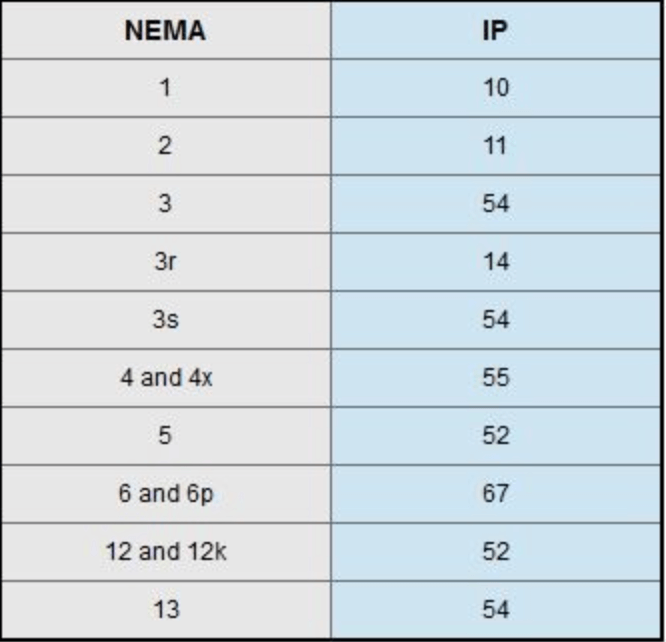
NEMA 和 IP
NEMA 13 外壳的常见设计有哪些?
NEMA 13 外壳的一些常见设计包括独立式、落地式、壁挂式、模块化和定制式。
这些围栏可以有一扇或多扇门,这取决于您的要求和围栏的大小——较大的围栏可能需要多扇门。
此类外壳还可以配有基座、脚轮、底部的调平脚以及顶部的吊耳,以帮助安装和移动它们。

带脚轮的独立式外壳
壁挂式 和 杆式安装 NEMA 13 外壳通常很小,用于容纳保险丝、开关和按钮面板。
它们的移动性较差,但占用的空间也较少。
它们甚至可以 凹陷 以节省更多空间。
它们是使用特殊支架安装的,这些支架可以是外部的,也可以有内部元素。
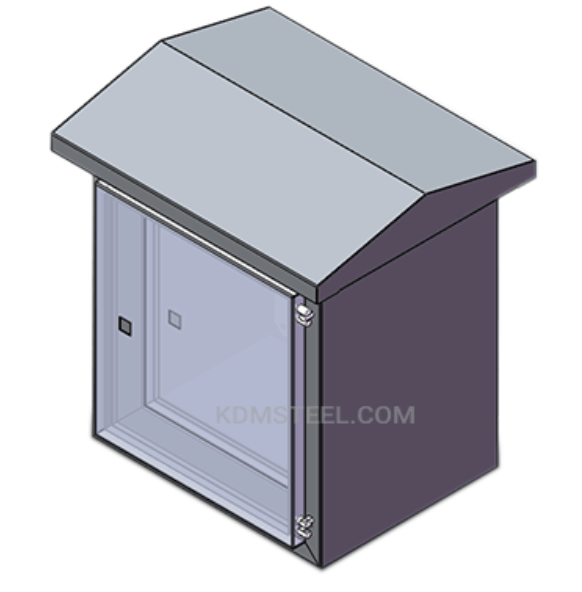
壁挂式外壳
我们还提供模块化外壳,可以改变并重新组装成不同形状的外壳。
模块化外壳 如果您不确定外壳将放置于何处,或者是否要将其从一个位置移动到另一个位置,那么这种方法非常有用。
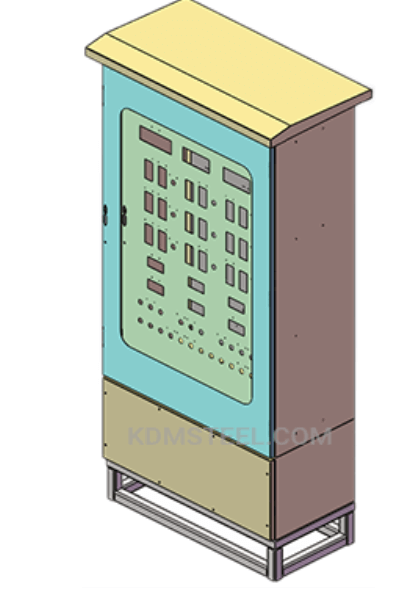
模块化外壳
碳定制外壳 可以是任意大小、尺寸;它们可以具有任意特征组合,例如门、铰链、通风口、窗户等等。

定制外壳
通常包含哪些附加功能?
您可以要求通风口、窗户、铰链门、锁、电缆管理系统等等。
通风口以及散热风扇,让热量散发出去。
它们冷却外壳的电气元件。
通风口提供更为被动的空气流动,而风扇则主动移动空气并用于冷却快速升温的设备。
这可以延长设备的使用寿命,并降低发生故障和电气火灾的可能性,例如 电弧闪光.

机柜内的风扇
这些还可以稳定外壳内的气压,防止可能损坏外壳电气元件的冷凝。
视窗 帮助人员以快速、非侵入的方式检查电气元件。
如果确实出现问题,窗口可以帮助您立即查看发生的情况。
如果您的外壳需要有按钮、仪表或信号灯,那么就需要有窗户。
它将允许人员检查所述仪表和灯光而无需弄乱盖子或门。
通常,窗户由聚碳酸酯或 ABS 制成。
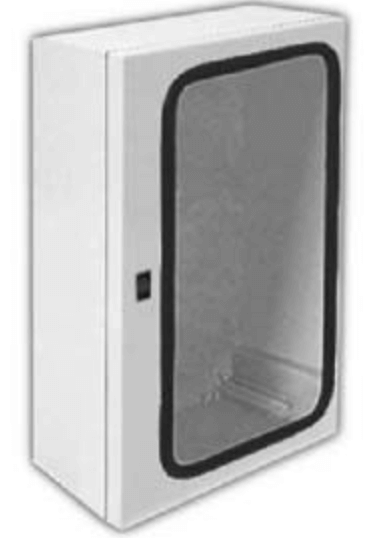
带窗户的封闭空间
铰链门 控制外壳的门或盖子的打开方式和打开程度。
您还可以为您的铰链门选择多种把手。
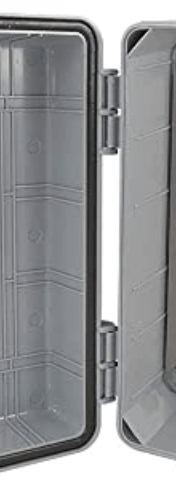
合页
我们提供的铰链包括连续铰链、偏置铰链、旗形铰链、弹簧铰链等等。
外壳还需要采取安全措施,以防止被篡改和意外访问。
锁、闩锁和夹具就能起到这样的作用。
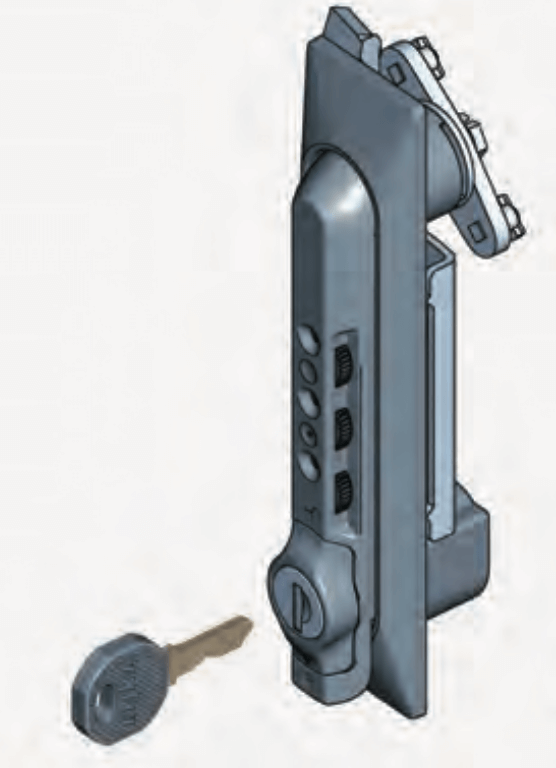
锁
挂钩、架子和其他整理装置构成了电缆管理系统。
NEMA 13 外壳的一些常见的次要功能包括文件袋、恒温器、加热器、脚轮、保险丝块、电源面板、灯和开关。

文件袋
文件袋用于存放操作手册;脚轮是外壳底部的轮子
恒温器和加热器有助于维持内部温度
保险丝块容纳不同的电路,而电源面板可能有断路器,并且通常控制电路。
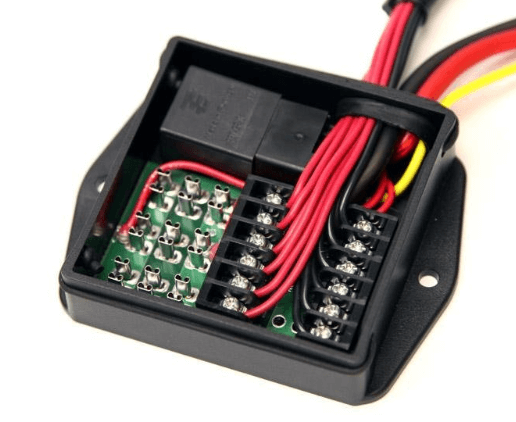
保险丝块
开关和灯有助于操作外壳内的设备。
我们提供防雨帽和遮阳罩等户外功能;但是,这些对于 NEMA 13 外壳来说不是必需的,因为它们位于室内。
NEMA 13 外壳如何维持温度?
一般来说,机柜内可以设有空调、冷却器、热交换器、加热条等来控制机柜内的温度。
这可以防止设备过热或冻结。
如果你的外壳用于冷藏场所,如冰柜或地下室,那么 热交换器 并且可能需要加热条。
当设备工作时,它可能会产生热量,并传递到周围的空气中。
热交换器将热空气推入较冷的隔间。
空气流动还可以使温度和压力均衡,从而延长电气设备的使用寿命。

热交换器
加热条利用电力来加热外壳内的空气。

加热带
外壳加热器的性能范围从 50 瓦到 1200 瓦,具体取决于外壳的大小。
空调和各种空气冷却器对于位于温暖地方的封闭空间(如工业锅炉房等)至关重要。
设备需要冷却以延长其使用寿命。
NEMA 13 外壳使用什么材料?
它们可以由 镀锌钢, 和 不锈钢 – 通常为 304、316 或 316L 等级。
碳钢,也称为低碳钢,通常比不锈钢更暗。
由于它仅含有铁和碳,因此具有磁性且更易延展。
这种钢也容易腐蚀,但它非常适合室内外壳,例如 NEMA 13 型。
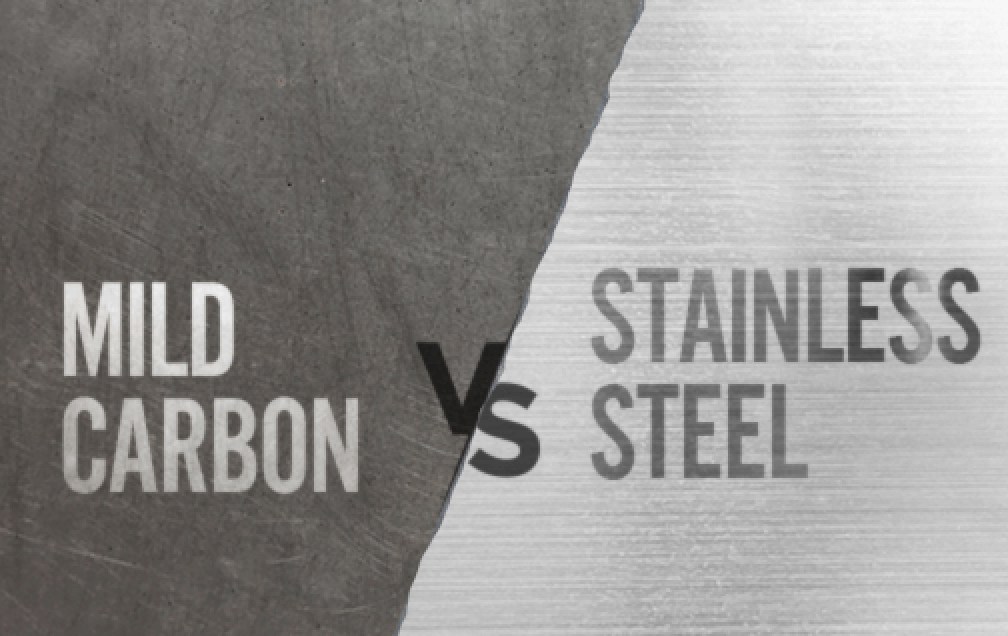
碳钢与不锈钢
不锈钢是在铁碳合金中添加不同比例的铬、镍和钼而制成的。
304 和 316 钢种在所有添加剂的含量上有所不同。
316 不锈钢可提供最佳的防盐雾、某些酸和高温保护。
这就是 316 更多地用于海洋应用的原因。
同时,304 对硫酸盐和氯的抵抗力更强。
304L 和 316L 钢材与其他等级的不同之处在于其碳含量较低,因此强度更高。
镀锌钢 涂有一层锌保护层,可防止腐蚀。
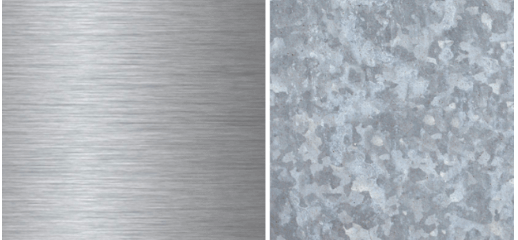
不锈钢与镀锌钢
这种钢比不锈钢更贵而且更重。
使用钢材时,金属板可能具有一定的规格或厚度,以符合 NEMA 标准或环境要求。
NEMA 13 外壳使用 14 或 12 量规钢,约为2-2.8毫米。
外壳也可由各种聚合物制成。
其中一种材料是玻璃纤维.
它非常坚固,可以散热,并绝缘电,降低干扰的影响和电击的可能性。
因此,玻璃纤维外壳可用作变压器、接线盒和隔间 电信 设备。
它由放置在塑料中的玻璃纤维制成。
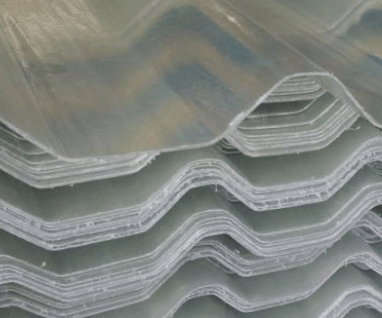
玻璃纤维
外壳也可以由铝合金制成。
它们不一定比钢合金更好,但取决于您的目的和需求。
与钢材等级一样,铝合金可以是 5052 或 6061 系列。
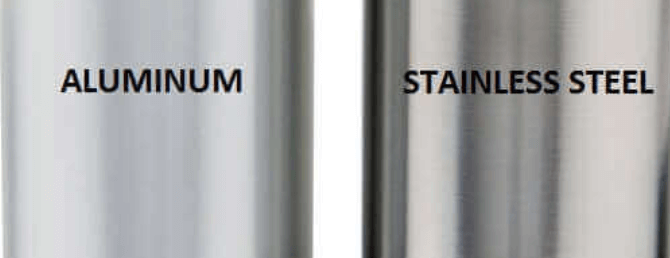
铝与不锈钢
两者都很轻,但 5052 更易焊接,而 6061 具有更高的抗腐蚀能力。
而且6061比较贵。
铝顶部有一层氧化物,可以防止腐蚀。
对于 NEMA 13 型外壳,碳钢、镀锌钢、不锈钢和玻璃纤维等聚合物是最好的。
然而,其他材料也同样有效。
如果你想了解更多, 发送您的询问 现在就进行咨询!
哪些油漆和涂料可用于 NEMA 13 外壳?
我们的外壳受到了良好的保护,但合适的涂层可以增加一层防腐保护。
阿洛丁涂层,又称 铬酸盐转化膜,用于钢和铝的油漆底漆,以及防止腐蚀。
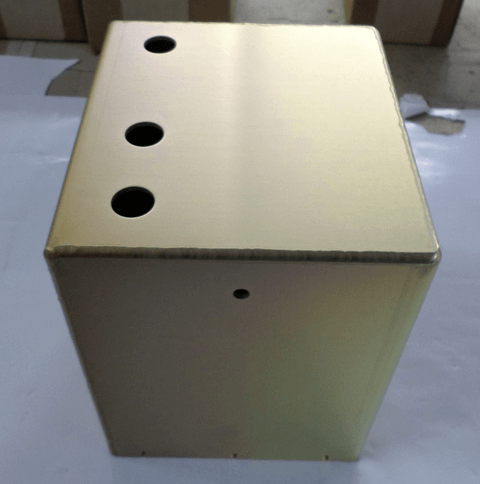
氧化铝涂层
这种涂层相当便宜,可以通过其特有的绿黄色调来识别。
除此之外,您还可以选择任意颜色的搪瓷或粉末涂料涂层。
粉末涂料 是利用静电力进行沉积的,比搪瓷更快更容易。
它的外观也更加灵活,为您提供光泽和哑光饰面的选择。
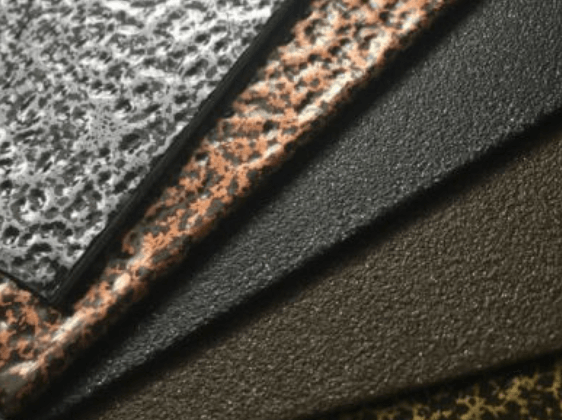
粉末涂料饰面
瓷漆 表面光滑,耐候性好。
阳极氧化 涂层使用阳极氧化金属(通常是铝)以增加其厚度,从而获得更好的耐腐蚀性。
钢通常不进行阳极氧化处理,因为这实际上会加速其腐蚀。
如果您计划将外壳安装在户外,还可以使用防涂鸦和防海报涂层来保护外壳免遭破坏。
NEMA 13 外壳最常使用粉末涂层。
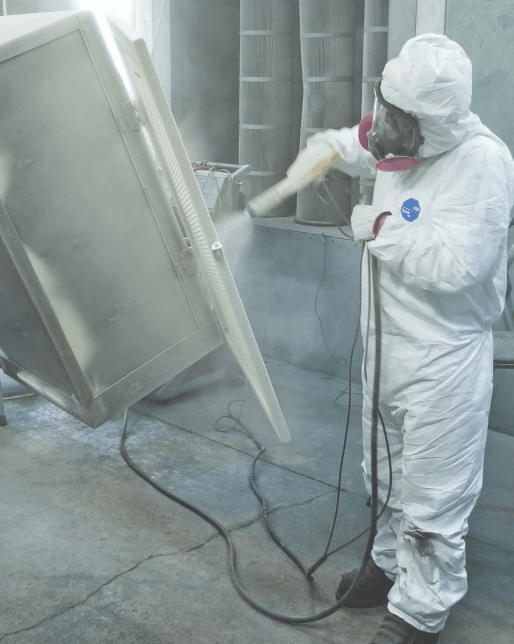
粉末涂料
我们可以提供任何颜色和表面处理的涂层,因此 联系我们 今天!
如何在 NEMA 13 型外壳上放置符号?
您可以使用我们的雕刻和丝网印刷服务定制您的外壳。
雕刻比丝网印刷更昂贵、更困难,但周期也更长。
通常,从表面去除约0.005至0.010英寸的金属。
一旦金属被去除,就会用任意颜色的环氧漆填充以满足您的要求。

雕刻
另一方面,丝网印刷是最简单、最经济的方法。
外壳的任何平面上都可以丝网印刷标签、警告、序列号、公司名称、徽标和其他任何内容。
但是,要小心!不锈钢或铝上的丝网印刷可能会磨损或刮掉。
然而,透明粉末涂层可以帮助防止这种情况。
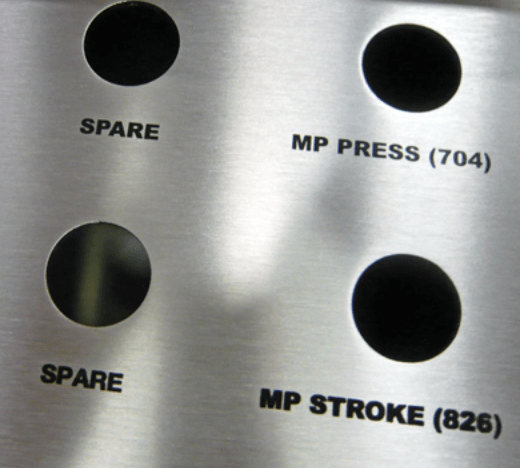
丝网印刷
除符号外,还应有其他标记。
如果设备必须以特定的方向安装,则必须在外壳上标记。
此外,带电部件所在的区域也必须有标记。
任何 警告或危险信号 也应雕刻或丝网印刷到外壳上。
订购外壳时还应该注意什么?
人们经常会犯一些错误。
这些包括选择错误的 NEMA 类型、错误的材料、错误的尺寸、错误的设计以及忽视功能。
NEMA 13 适用于非危险、气压正常、有雨水或滴水且有少量灰尘的室内场所。

外壳
NEMA 13 外壳通常为中型或小型。
另一个需要注意的是,如果您选择不锈钢,请做好准备,因为它不是无污渍的。
有时,腐蚀确实会以轻微污渍的形式表现出来,但只需用水就可以轻松去除。
至于设计和功能,这些都是针对具体情况的,所以 咨询制造商 寻求建议。
什么是NEMA 13 外壳?
NEMA 13 外壳设计用于防止室内工业用途中的污垢、纤维、溅油和非腐蚀性液体。
NEMA 13 电气外壳保护操作员免受危险部件的伤害。
它还可以保护电子系统免受外来碎片和水过滤的侵害。

图 1 NEMA 13 外壳
NEMA 13 外壳的优势是什么?
- 进入危险区域。
NEMA 13 外壳提供了一定程度的保护,以防止接触危险部件。
大多数其他部分(包括 NEMA 类型 12)也同样如此。
经常在外壳内操作的人员和其保护的材料应该受到保护,以免受到伤害。
- 固体异物进入。
NEMA 13 外壳可提供一定的安全性,防止固体异物侵入。
除了防止污垢掉落之外,NEMA 13 外壳还可以防止灰尘、棉绒、纤维和无害飞散。
- 水侵入。
NEMA 13 提供额外的保护,防止水污染。
- 冷却剂和油侵入
NEMA 13 外壳可防止油和冷却剂喷溅。
NEMA 13 外壳等级是什么意思?
NEMA 13 外壳额定系统是电气和电子设备设计师的有效工具。
选择能够提供设备所需保护的外壳。
定义 NEMA 13 等级。
NEMA 13 等级与更常用的 NEMA 12 等级非常相似。
符合 NEMA 13 标准的外壳可针对以下情况提供保护:
- 意外接触危险或敏感区域
- 流动和漂移的异物(例如灰尘、污物、棉绒和其他污染物)的渗入。
- 溅水或滴水侵入
- 冷却液渗漏和非腐蚀性油侵入
具有 NEMA 13 等级的外壳还可以防止燃料、冷却剂飞溅和喷洒等非腐蚀性化学剂。
图 2 NEMA 13 外壳
NEMA 13 外壳不保护什么?
NEMA 13 外壳的设计并不能够防御雪、雨、雨夹雪、浸入水中或风吹来的灰尘。
NEMA 13 外壳也不符合防止腐蚀性液体溅出或泄漏的要求。
的设计特点是什么 NEMA 13 外壳?
- 电池隔间。
它适用于室内电气应用。
- 覆盖清晰。
对于需要可见地接触内部组件的用途,聚碳酸酯采用了透明半透明盖子。
- DIN 导轨外壳。
DIN 导轨外壳有多种尺寸,可满足您的电气或电子需求。
- 表面/标记安装。
对于需要快速表面连接的应用,壁挂式外壳采用模制或装有螺钉的法兰制造。
- 用铰链盖住。
铰链式电气外壳和接线盒符合 NEMA 防风雨和防水保护标准。
- 淘汰赛盒子。
电气应用的脱模盒可用于现场安装电缆、电线或导管。
- 可上锁。
可锁的电气外壳和锁定的电气连接可提供 NEMA 和 IP 认证的户外防水保护。
- 低能见度。
低调的户外外壳具有防水功能,并符合各种 NEMA 和 IP 分类。
- 一瞬间就在一起了。
卡扣式盒子是一种将小工具存放在塑料工具箱中的快速简便的方法。
图 3 NEMA 13 外壳
NEMA 13 外壳类型有哪些?
以下是一些最常见的 NEMA 13 外壳类型:
- 室内外壳
- 户外围栏
- 带铰链的外壳
- 防尘外壳
- 防水外壳
- 互连盒
- 带透明盖的方块



